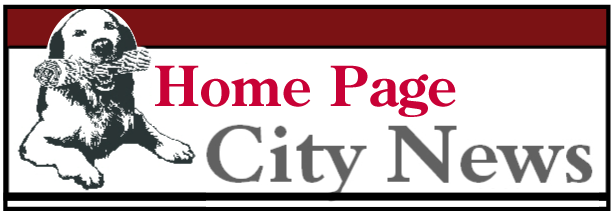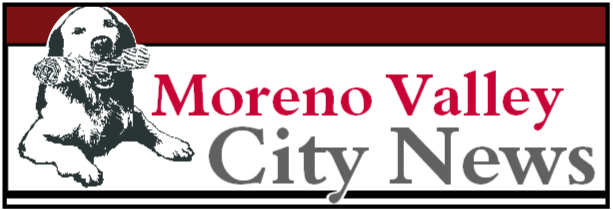In 1949, Milton J. Murray became the first person hired by the Loma Linda College of Medical Evangelists (now Loma Linda University) to focus specifically on public relations activities. His interest in public relations started soon after being honorably discharged from the United States Army on October 31, 1945, when he became a linotype operator at the Ketchikan Chronicle, in Alaska. The job opened his eyes to a new profession.
“I often had to linotype little stories about inconsequential goings-on in the community. They would come from service clubs or women's groups, written in longhand on little pieces of paper. It suddenly occurred to me that my own local church congregation was participating much more significantly in community service activities, and we weren't getting any of it into the paper. And why not? Just because nobody took the trouble to do it. That gave me the vision of what public relations could do for my church,” he said.
At La Sierra College (now La Sierra University), Murray became an English major to study journalism. By 1947, he had become the editor of the school paper. During his tenure as editor, the Criterion won the All-American Honor Rating from the Associated Collegiate Press. By the spring of his senior year, because Murray needed to land a job, he corresponded with three Seventh-day Adventist publishing houses and the presidents of ten Union Conferences in the United States and Canada. They all responded, but no one had a position available. As a safety precaution he lined up a full-time linotype job at the Riverside Press-Enterprise, with the understanding that sometime in the future, the paper might work him into the editorial room. He wanted to be an editor or correspondent.
Just then, Bruce W. Halstead, MD, from CME's new School of Tropical and Preventive Medicine (now the School of Public Health), contacted him to publicize the new school and to make it easier for its faculty to attract funding for research. Because he had almost no budget, Halstead looked for an entry-level person. Because no Adventist college offered a major in public relations or journalism at the time, he was limited to graduates who had some related experience. “I shopped around, and started to spread the word over at the La Sierra campus. I asked people: 'Is there anybody here who is dynamic, is a good salesman, and can get along with people?' A reply came back in a few days. There was a fellow on campus named Milton Murray, who was a real activist in student affairs. Everybody I talked to,” reported Dr. Halstead, “singled out Murray.”
At first administrators at CME, by this time the largest medical school west of the Mississippi, were highly skeptical of the need for “public relations” and “development.” These activities as a profession were so new they hired Murray half time for the first two months, subject to a four-month review. He soon discovered that people in neighboring towns hardly knew of CME's existence. In 12 years, by winning the respect of teachers and administrators for his professional competence and the importance of his work, he built the public relations office into a full-function operation with 18 full-time employees, including five at the White Memorial Hospital in Los Angeles.
At Loma Linda, Murray immediately began to involve himself in professional growth activities, taking postgraduate classes, attending seminars, and visiting public relations offices at other institutions. He took on regional leadership roles in the American College Public Relations Association. Through that professional exposure and involvement, Murray’s eyes were opened to the burgeoning postwar growth of sophisticated fundraising programs in American higher education and health care.
CME’s 50th anniversary was a turning point for the institution and for Murray himself. At an administrative committee meeting in mid-December, 1955, members expressed appreciation for the success of year-long festivities which he had organized. It had boosted morale and unified the institution. Just then he expressed his somewhat shocking conclusion that the institution had made a great error of omission. “If this institution had really been on the ball,” he said, “we would have had another committee working on fundraising to capitalize on the anniversary. We’ve done nothing about fundraising and have missed a great opportunity.”
Murray’s somewhat disconcerting comment accomplished its purpose. The next day, Administration asked him to be director of development, in addition to his public relations responsibilities. Between June 1 and September 30, four committees determined that the institution’s expansion needs in the next decade would cost $23 million. Murray quickly organized two development conferences, where CME administrators began to give serious attention to long-range planning, making friends in the secular world, and organizing volunteer fundraisers.
Within six years Murray's vision of institutional advancement had blossomed. He eventually transitioned into full-time philanthropic fundraising and made a major contribution to the discipline not only to the Seventh-day Adventist denomination as director of its unique Philanthropic Service for Institutions office, but also to the profession in general. As a mentor he trained young people in the art of philanthropy. Between 1974 and his retirement in 1994, his Hospital Development Fund, and other similar programs directly or indirectly generated approximately $1 billion for health care and secondary and higher education.
He eventually won the Outstanding Fund-Raising Executive of the Year Award from the National Society of Fund-Raising Executives, an honorary doctor of laws degree from Andrews University, an honorary doctor of Humanitarian Services degree from La Sierra University, and a citation from the American Protestant Health Association.










